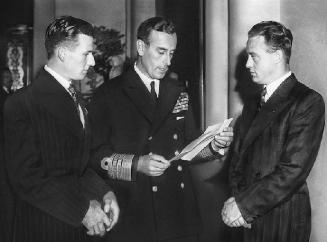 |
|||
Operation Chariot: The 'Empire' Strikes Back
Since the end of World War Two, and largely as a consequence of the continuing financial dominance of the Hollywood motion picture studios, generations who have looked to the cinema and television, consciously or otherwise, as a source of 'factual' information have been encouraged to adopt a version of the story of the war which has emphasised the contribution of the United States at the expense of other nations - not least the United Kingdom and its allies throughout what was then 'The Empire'. The old British 'Ealing-style' films of the '50s no longer resonate in today's technological world: and more recent productions such as the flawed attempt to retell the story of Dunkirk, have done little to address the imbalance. Meanwhile skilfully executed productions such as 'Band of Brothers', 'The Pacific' and 'Saving Private Ryan' - as well as a plethora of perhaps less notable examples - have served only to promote the fiction that our military contribution to ultimate victory in all theatres of war was essentially in the role of supporting cast.
Of course this was never the case, and particularly so in the twenty-seven months of war before American forces set foot in the UK, during which we, with the assistance of the 'Empire', plus the often underestimated contribution of those who had fled the newly-occupied European and Scandanavian territories - and even, although not officially, the many from the Irish Republic who flocked to the 'British' colours to fight the evil of fascism (https://www.historyireland.com/20th-century-contemporary-history/the-forgotten-volunteers-of-world-war-ii/)- fought on alone against an enemy whose manifold successes had begun to breed worldwide a myth of invincibility.
If remembered at all with any degree of accuracy, we might look back on the period prior to the attack on Pearl Harbor as a phase - a fraught phase, yet still a phase - in an ongoing drama whose outcome, long-term, was never in doubt. Yet this could hardly be further from the truth given that, especially following the debacle of Dunkirk, we had no effective defence and would almost certainly have collapsed had Germany launched an invasion. Added to which our ability to continue hurling bellicose comments in the direction of Nazi Germany relied almost entirely on maintaining, at whatever cost, a continuous flow of weapons, raw materials, oil and foodstuffs across the Atlantic in the face of aggressive - and increasingly successful - German attempts to sever it and bring the war to a successful close.
The United States did finally join the war following the Japanese attack on the Pearl Harbor Naval Base on December 7th, 1941; however, at least initially, her attention was firmy directed towards the Pacific. The first US troops arrived in the UK in January 1942, when the initial contingents of what would eventually grow to become a very significant American service and civilian presence in Northern Ireland, landed in Belfast - but it would be late 1942 before these achieved true effectiveness. Meanwhile, although the Americans were now 'here', and the long-term outcome had become significantly brighter, Britain and her old allies still had to fight hard through a period of great strategic turbulence not to collapse on the very eve of potential victory.
Operation Chariot therefore, in spite of the fact that it took place several months after the U.S. entered the war, remained essentially an 'Empire' affair particularly in respect of its Naval component which contained officers and ratings from distant Canada, Australia and New Zealand. The names of those currently identified as having come to the aid of what was then the 'Mother Country' are given below, along with images where we have them. If you can help with corrections, additions, biographical information or images, that information would go a very long way towards helping us ensure that their crucial contribution to ultimate victory is not forgotten.
BAKER - Graham Macnaughton*, Lieutenant, RCNVR, age 25, ML447, Mentioned in Despatches, KIA: Halifax Memorial Panel 8
BOOTH - Henry Percival, Chief Petty Officer, RNZN, NZD.673: age 32, HMS Campbeltown, KIA: Escoublac-La Baule 2.B.7
BRADY - Patrick J, Leading Seaman, RANVR, P/MV.37: ML443, Distinguished Service Medal
CROFT - Donald Kenneth, Able Seaman, RANR, S5010: ML307
FISHER - Gore Victor, Sub-Lieutenant, RNZNVR, ML270
HALL - John Grenville, Sub-Lieutnant, RANVR, ML160
HUTCHINSON - Philip Scott, Sub-Lieutenant, RNZNVR, ML341
LANDY - Patrick Wallace, Sub-Lieutenant, RANVR, ML306
LLOYD-DAVIES David, Lieutenant, RCNVR, ML267
NEWMAN - R. H, Telegraphist, RNZN, D/NZD.2091: ML306
O'CONNOR - Athol Francis, Sub-Lieutenant, RNZNR, age 21, MTB74, KIA: New Zealand Naval Memorial, Devonport, Auckland, Panel 7
O'ROURKE - John Edward, Sub-Lieutenant, RCNVR, MGB314
OUTTRIM - Leigh, Ordinary Seaman, RANVR, PM/V54: ML457
TAYLOR Archie William, Flight Sergeant, RAAF, 402417 (age 28): KIA: Runnymede Memorial Panel 111
WALLACH - Cecil William, Lieutenant, RANVR, ML270, Distinguished Service Cross
WALLIS - Norman Bryan Hamilton, Lieutenant, RANVR, ML270, Distinguished Service Cross
WINTHROPE - William James, Surgeon-Lieutenant, RCNVR, HMS Campbeltown, 79230 Mentioned-in-Despatches, KIA: Escoublac-La Baule 2.B.4
* This is the correct spelling of Macnaughton
** Image courtesy of Greg Linwood
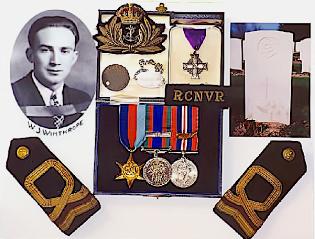
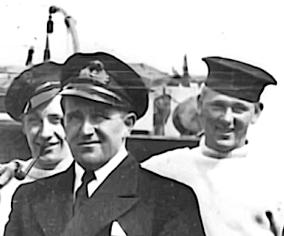
Surgeon-Lieutenant 'Jock' Winthrope
Lieutenant (1942) 'Bill' Wallach
Lieutenant Norman Wallis - centre
Able Seaman Don Croft - right
Lieutenant Graham Baker
Leigh Outtrim (left) Louis Mountbatten (middle) and Patrick Landy (right) taken at Government House, Melbourne**
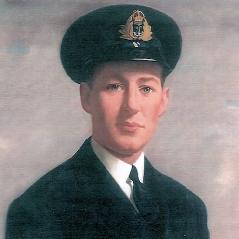
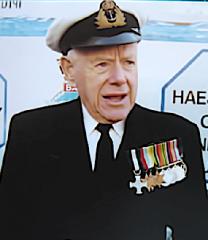
All material contained in this site is subject to copyright and must not be reproduced in any format without the consent of the relevant copyright holder
